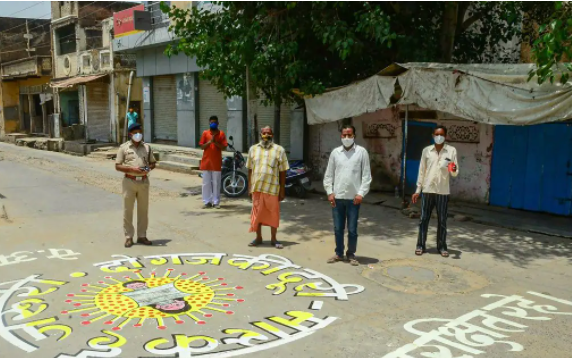As the Covid second wave have been gradually entering in the semi-urban and rural areas of the country, the Centre on Sunday issued new guidelines battling against the virus. Door-to-door surveillance, teleconsultation with community health officers, and training in rapid antigen testing are among the several areas of focus in the new guidelines against Covid-19.
The new guidelines suggests that it is important to ensure that community-based services and primary health infrastructure in these areas are equipped to manage infections.
The Union Ministry of Panchayati Raj has written to all the state governments to take preventive measures to curb the spread of the Covid-19 pandemic in rural India. In its letter, the Health Ministry has suggested the states to sensitise and facilitate the Panchayats/Rural local bodies towards meeting the challenge and provide leadership to combat Covid second wave.
The ministry released the SOPs on Covid-19 Containment and Management in Peri-urban, Rural and Tribal areas to enable communities to strengthen primary level healthcare infrastructure at all levels to intensify Covid-19 response.
The health ministry guidelines said that in every village, active surveillance should be done for influenza-like illness/severe acute respiratory infections(ILI/SARI) periodically by ASHA with help of Village Health Sanitation and Nutrition Committee (VHSNC).
The new guideline suggested that the symptomatic cases can be triaged at village level by teleconsultation with community health officers, and cases with comorbidity/low oxygen saturation should be sent to higher centres. Depending on the intensity of the surge and the number of cases, contact tracing must be done as far as possible based on the Integrated Disease Surveillance Programme’s guidelines, the SOPs said.
Under the new guidelines, the oxygen saturation level monitoring of Covid patients is important and it is desirable for each village to have an adequate number of pulse oximeters and thermometers. A home isolation kit shall be provided to all active cases. Each kit must include life-saving medicines, such as, paracetamol, ivermectin, cough syrup, and multivitamins, besides a detailed pamphlet indicating the precautions to be taken, a proforma to monitor the patient’s condition, contact details in case major symptoms showing up or deterioration of health.
Patients under home isolation will stand discharged and end isolation after at least 10 days since the onset of symptoms (or from date of sampling for asymptomatic cases) and no fever for three days.

